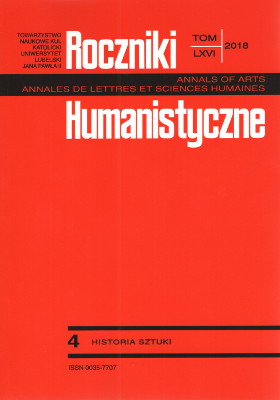Architektura kościoła parafialnego w Gołębiu. Przyczynek do badań wpływu projektów Ottaviana Mascarina na architekturę polską pierwszej połowy wieku XVII
Architecture of the parish church in Gołąb. A contribution to the research on the impact of Ottaviano Mascarino’s projects on Polish architecture of the first half of the 17th century
Author(s): Aleksander StankiewiczSubject(s): Fine Arts / Performing Arts, Architecture
Published by: Towarzystwo Naukowe KUL & Katolicki Uniwersytet Lubelski Jana Pawła II
Keywords: Ottaviano Mascarino; Jerzy Ossoliński; Gołąb; sacred architecture around 1600; Italianism
Summary/Abstract: The parish church in Gołąb, erected in the years 1626-1634, is one of the buildings that stand out from Polish modern architecture of the 17th century. Its designer and builders are not known, but its plan was based on the church of San Salvatore in Lauro in Rome, built between 1591 and 1598, designed by the architect Ottaviano Mascarino. The projection of the nave of the church in Gołąb, the articulation of which is made of pairs of columns flanking large niches intended for altars, clearly refers to San Salvatore in Lauro. The facade and decorations of the parish church in Gołąb have a different genesis. As San Salvatore in Lauro did not have a facade at that time, the designer of the church in Gołąb decided to introduce a two-tower facade, referring to similar solutions, previously used in Czemierniki (after 1603) or Pińczów (before 1619). The decoration of the facade of the building made in the mortar refers to the German graphic patterns and motifs known from the sculptural workshop of Tomasz Nikiel, but also used by the bricklayers from Kazimierz Dolny. The supposed administrator responsible for the selection of the Roman design for Gołąb was Chancellor Jerzy Ossoliński, a founder known for other realizations based on Mascarino’s plans, stored at the Accademia di San Luca in Rome.
Journal: Roczniki Humanistyczne
- Issue Year: 66/2018
- Issue No: 4
- Page Range: 5-31
- Page Count: 27
- Language: Polish

